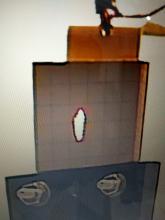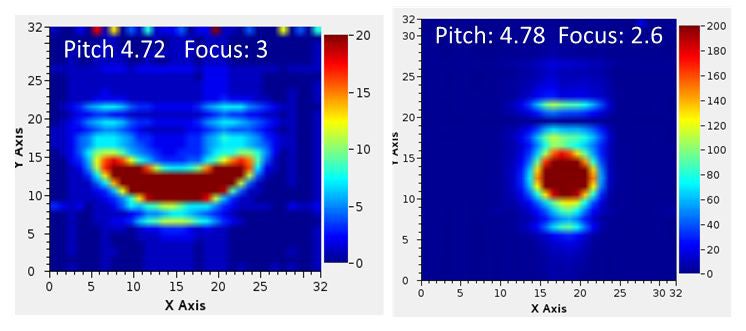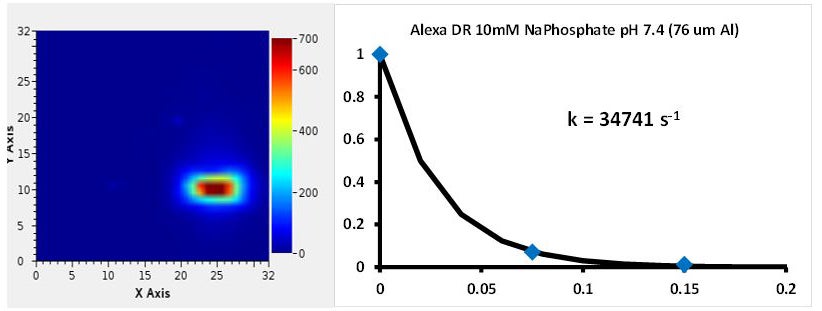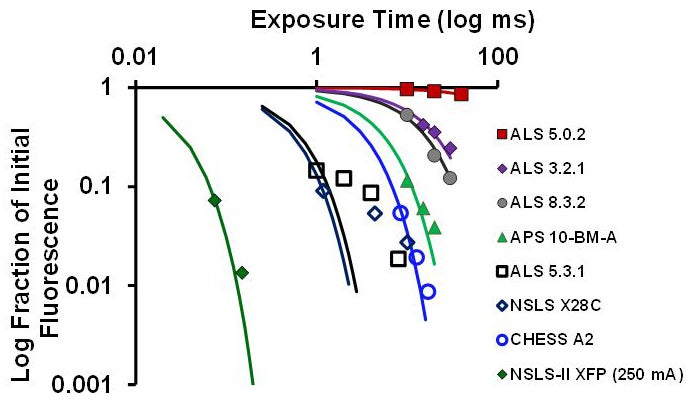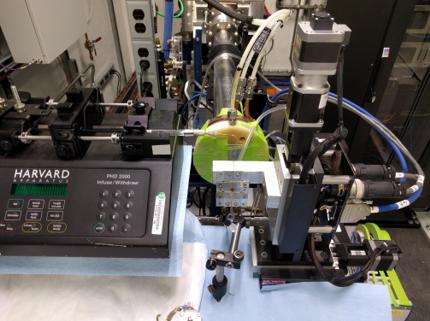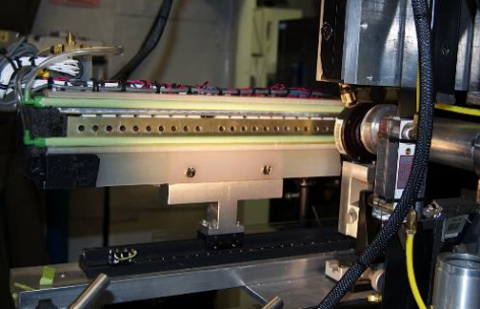X-ray Footprinting for In Vitro and In Vivo Structural Studies of Biological Macromolecules (XFP)
With support from National Science Foundation and Case Western Reserve University, and constructed in partnership with Brookhaven National Laboratory at the National Synchrotron Light Source II (NSLS-II), the Case Center for Synchrotron Biosciences team has developed and built the next world-class instrument for synchrotron footprinting (FP), the XFP beamline.
XFP delivers broadband X-rays (5-16 keV) using a three-pole wiggler (3PW) insertion device, and can use toroidal focusing to achieve variable spot sizes from ~120 µm x 450 µm to > 3 mm x 3 mm FWHM to accommodate multiple sample exposure configurations. As the newest synchrotron facility in the USA, the NSLS-II is not yet at full design current (500 mA in the electron beam); when it reaches this goal, the XFP beamline is expected to provide more than an order of magnitude of additional flux density for FP experiments than was previously available at NSLS X28C, enabling study of more complex biological systems and allowing researchers to access timescales in the microseconds. Located on bending magnet port 17, immediately adjacent to cutting-edge macromolecular crystallography beamlines FMX and AMX, this new instrument is taking General User proposals as of January 2017.
XFP News
XFP is now accepting General Users!
The team at CSB and partners at NSLS-II successfully completed the rigorous and intense Instrument Readiness Review of the XFP beamline in June 2016 to allow the first photons to be delivered to the beamline on July 10 & 11 2016 (front end 07/10, photon delivery system 07/11). After some conditioning and commissioning, the first brave “science commissioning” users were welcomed to the beamline in Fall 2106. Science commissioning continued through Spring 2017 (accepting GU proposals from January 2017). XFP obtained official approval to begin General User operations in May 2017, and hosted our first General Users in June 2017. A poster with technical details on the beamline is available XFP Poster.
Development of the Kilopixel Imaging Detector has yielded a fantastic tool for observing the bean and adjusting the toroidal mirror. This project (NSF-funded collaboration with the EPIC detector group from Stony Brook University and BNL) was a finalist for a 2016 R&D award; results published as the cover article of JSR (JSR 22 1396). Axes are 60 um channels, color scale is arbitrary based on grain, horizontal stripes are artifacts.
Beam Images from Kilopixel Imaging Detector at XFP
Ongoing work with the focusing mirror is moving us toward beam parameters optimized for different experiments. The kilopixel imaging detector allows observation of the beam shape, motion and intensity simultaneously as we adjust the mirror (see images). The smallest focus achieved thus far is ~ 120 x 450 µm FWHM. The record Alexa response curve measured thus far has a whopping rate of >30,000 s-1 !!! This is limited by our ability to keep the capillary intact and push the fluid fast enough. These are solveable issues – the beam is intense and will get hotter (we’re only at 275 mA in the ring and we’re headed for 500 mA as we move forward)!
Focused Beam at XFP
Tightest focus achieved: ~120 x 450 um. Alexa dose response rate shown for beam with 76 microns of aluminum attenuation (sample is 10 mM Sodium Phosphate buffer pH 7.4).
Beamline Setup
The current standard beamline apparatus available for use supports capillary flow experiments (generally 200 µm ID capillary), with a nominal sample volume of 50-100 µL per exposure and exposure times ranging from 75 microseconds to 2 milliseconds. Equipment currently in advanced stages of commissioning will support high-throughput low-volume (5 µL) steady state sample exposure from -30 °C to 45 °C (exposure times >10 ms), millisecond time scale time-resolved experiments, and multi-pump/syringe pump large volume (up to 60 mL) or continuous flow sample exposure, including live cell culture experiments with in-line incubator and fraction collector. Samples concentrations are generally in the range of 100 nM - 10 µM.
How to Become a User at XFP
The CSB provides comprehensive beamline user support for research projects conducted by academic, government and industrial institutions. This support includes consultation on experimental design and sample preparation, assistance and training in submission of good beamline proposals, performing the experiments at the beamline, and an introduction to data analysis. Collaborations with beamline staff and/or additional experts in the Center may be available to enhance your program. XFP is now accepting General User proposals for use of the capillary flow apparatus. If you would like to use the equipment still in commissioning, please contact us to discuss your proposal. To submit a proposal, go to https://www.bnl.gov/ps/userguide/ and click on the “apply for beamtime” link on the righthand side. All proposals are reviewed by a panel, rated against all other proposals received and allocated time accordingly; expect that this process will resilt in assigned beamtime approximately 3-6 months after the proposal is submitted. Starting Summer 2017, we expect that a few days of beamtime will be set aside for “rapid access” beamtime, where a proposal and beamtime turnaround time can be as short as 2 weeks. The pilot run for this service will be limited and will be allocated on a first-come-first-served basis initially. Mail-in collaborations are also available; please contact the lead beamline scientist (Jen Bohon) for details. Please click the links below for details on the current schedule.
West Coast Footprinting
The CSB is working with the Physical Biosciences Division at Lawrence Berkeley National Laboratory to help expand access to X-ray synchrotron footprinting to the West Coast. Beamlines 3.2.1 and 5.3.1 at the ALS now provide X-ray footprinting services, with nominal apparatus provided onsite. Results of a comparative study of beamline capabilities at these ALS beamlines, as well as beamlines at other synchrotron facilities around the country, are shown below (Bohon et al. 2014 JSR 21, 24-31: doi:10.1107/S1600577513024715). To schedule footprinting experiments at ALS, please contact Sayan Gupta (sayangupta@lbl.gov).
Comparative Study of Beamline Capabilities at Various Synchrotron Facilities (Note: NSLS X28C no longer in service)
Capillary Flow Apparatus
High-Throughput Apparatus


